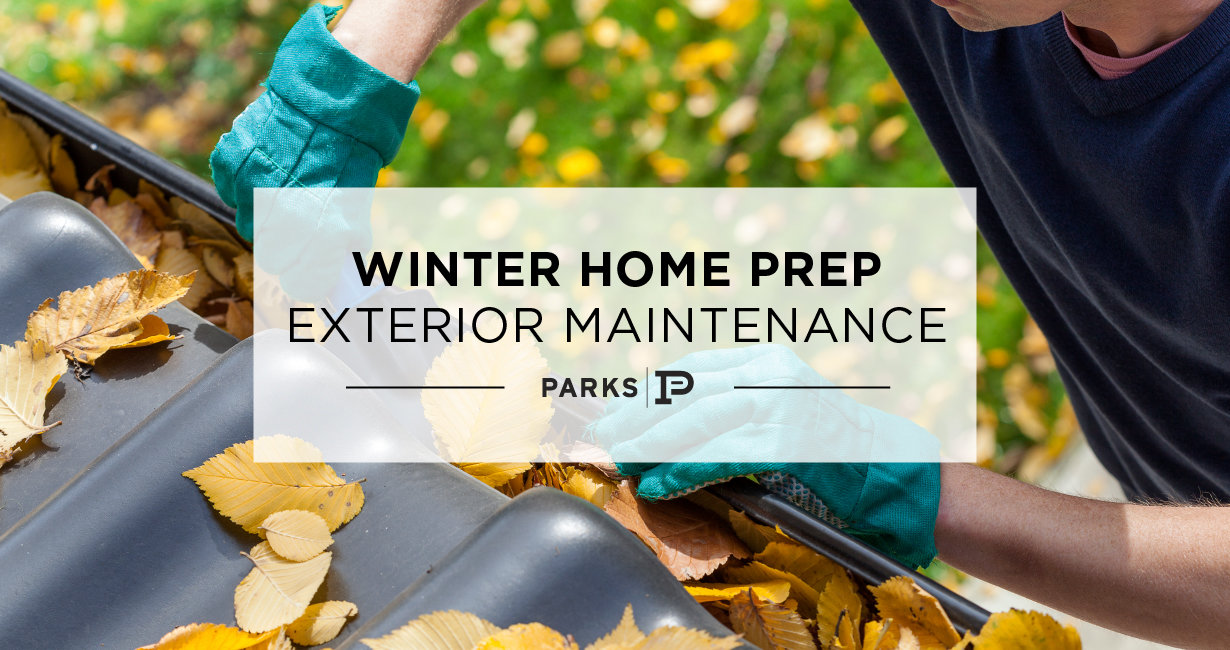
Tennessee is expecting a warmer-than-average winter this year, but prudent homeowners will nevertheless prepare for winter with these 10 exterior home maintenance steps to keep your home warm and in tip-top shape.
1.) Protect Your Pipes
Even children know that water expands as it freezes, and when the temps hit freezing, the water in your pipes will be no exception.
To avoid the headache and huge expense a burst pipe can bring, leave at least one faucet in your home dripping when the temperatures drop.
Check your outdoor faucets and sprinkler systems, being sure to empty all the water from them before it has a chance to freeze. Disconnect hoses and bring them into a garage or shed.
Additionally, wrap your home’s interior and exterior pipes with insulation, especially those that run through areas of your home that aren’t fully insulated (garages, basements, and attics are common culprits). Any hardware store will carry pre-slit pipe foam. Then, cut the foam to the length of your pipe and pop on the insulating wrap. Secure the foam with duct tape, and you’re set!
Pro Tip: Know where your water shutoff valve is so that you can turn off the water in case of an emergency.
2.) Check Your Chimney
If you’re planning to use your fireplace to keep warm this winter, have the chimney inspected for creosote buildup and animal activity before you set your first blaze of the season.
If you’re not planning to use your fireplace at all, consider installing a chimney balloon; drafts will be kept out and the heat will be kept in, reducing energy bills.
3.) Schedule an HVAC and Ductwork Inspection
Before you run your furnace for the first time, schedule an HVAC and ductwork inspection. Among the many checks they’ll run, your HVAC professional will give your furnace a tune-up, do a CO safety check, replace your air filters, and clean out your HVAC motor.
While they’re at it, have your HVAC pro inspect your heating ducts. Typically, homeowners lose 60% of heated air before it ever reaches the vent! That’s an expensive mistake with an easy fix; the HVAC professional will locate and seal leaks, ensuring that you’re not paying to heat the outdoors.
4.) Clean Your Gutters
Clogged gutters lead to standing water, which become icicles and ice sheets as soon as it gets cold enough. Keeping your home’s gutters clean is undoubtedly one of the most important exterior maintenance jobs, so make this task part of your seasonal routines and head off major hassle down the line.
5.) Trim Tree Branches
Do an inspection of the trees surrounding your home. If any branches are near your roof or already brushing up against your home, trim them back before the first winter storm rolls in. Snow and ice will weigh down even strong tree branches, potentially causing them to crack and damage your home.
Strong winds, too, can whip these branches against windows or rooftops. Spending a few hours trimming branches could prevent catastrophic damage to your home and may even save your life.
6.) Block Drafts
Drafts usually sneak in underneath doors and around windows. If you find a leak under a door, lay down a draft blocker or a rolled-up bath towel. If a leak is coming in near a window, either weather-stripping or weather-resistant caulk is a good choice.
If you fix these common draft culprits in your home but are still feeling the chill, you may want to check for air leaks where wires or pipes enter your home’s foundation.
7.) Reverse Ceiling Fans
When we think of utility ceiling fans, most of us think about beating the scorching temps of summer. However, by switching the direction of your fan’s rotation (from counterclockwise to clockwise) and keeping it running on low, you’ll continuously feel the warm air from near your ceiling flow toward the floor.
Remember, hot air rises, so this tip is essential if you want to avoid paying to heat your room from the ceiling down.
8.) Reinforce Your Home’s Insulation
By simply installing more fiberglass insulation in your attic will greatly increase the energy-efficiency of your home. The rule of thumb for fiberglass is an insulation depth of 12”, so give your attic a thorough once-over every fall.
If you find areas that need reinforcement, install another layer of the fluffy stuff. Double-check to make sure the insulation you choose does not have a paper backing; these backings will trap moisture in your home, potentially causing mold issues and water damage.
Wear gloves and long sleeves while you work and be careful to keep the itchy fibers from getting in your eyes, nose, or mouth.
9.) Bring Your Portable Plants Indoors
Before the first cold snap arrives, gather your portable plants and move them indoors. For most house plants, the cutoff is 45 degrees F, but to be safe, delicate tropical plants should be brought in earlier.
10.) Check Smoke and CO Detectors Early and Often
Winter is when hospitals see a big jump in cases of carbon monoxide poisoning and smoke inhalation. To keep you and your family safe, check your CO and smoke detectors at least once a month. Replace batteries as soon as they’re low or every six months, whichever comes first.
This winter, no matter how dreadful the weather outside becomes, you’ll be able to rest easy knowing that your home is protected from the storms. We at Parks wish you all a delightful and safe winter season!
Posted by Parks Compass on
Leave A Comment